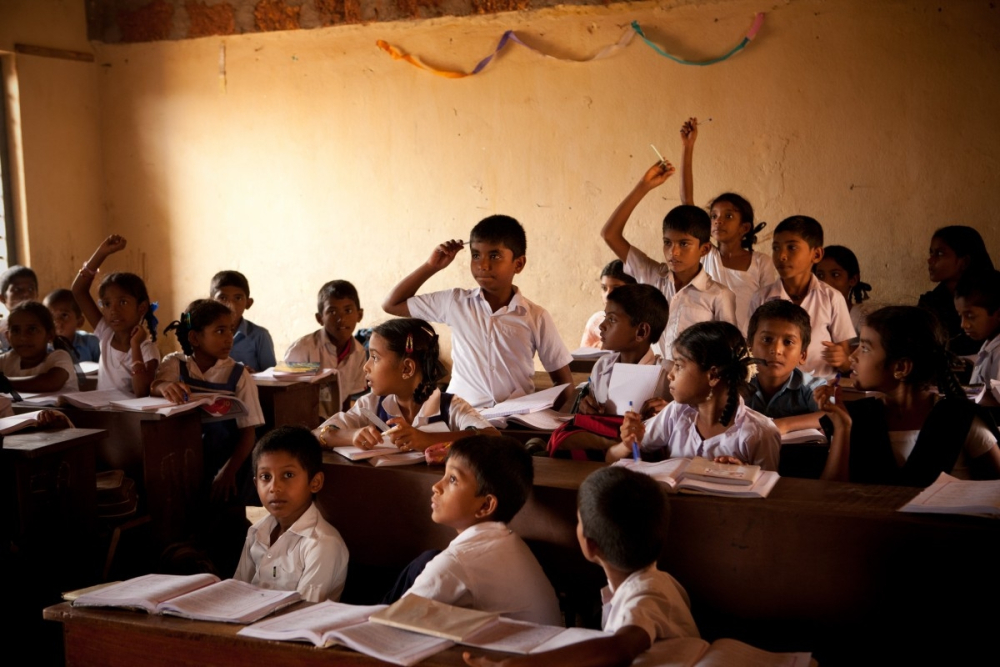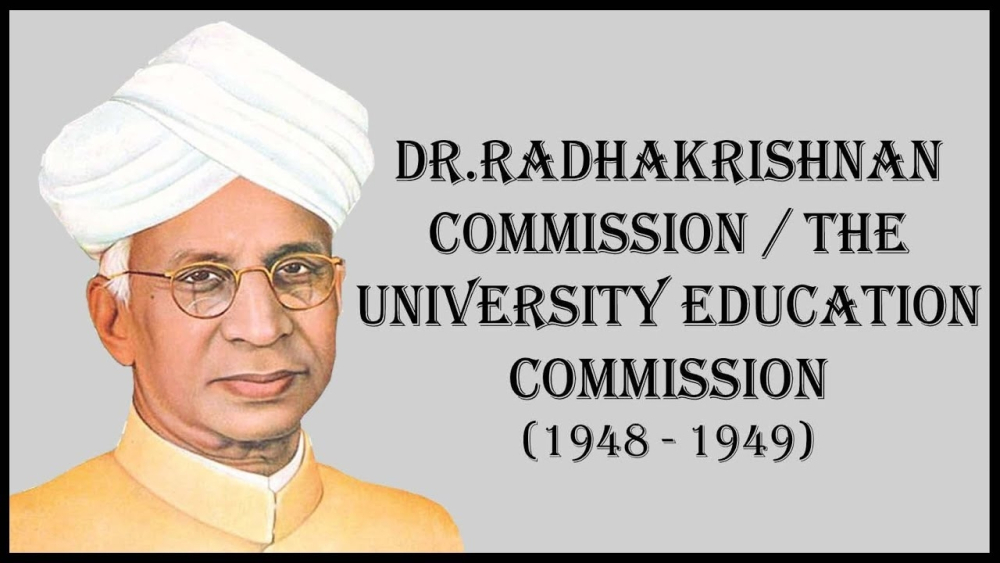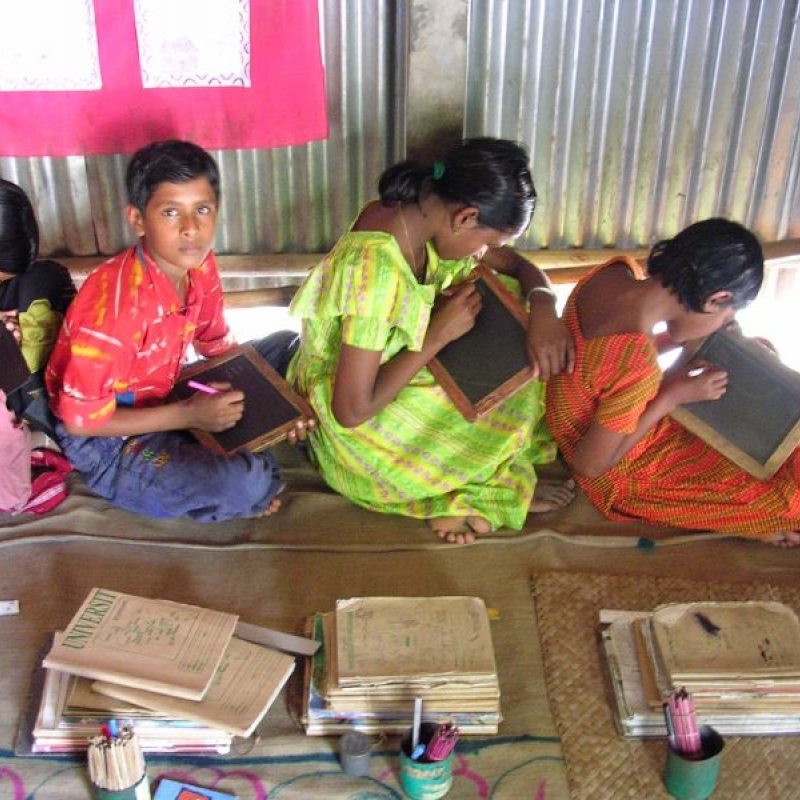State policies are not just about the existing set of legislatures but bring a legacy of past visions. The Education Policy is no different. Here, Sahapedia trains the spotlight on the Zakir Hussain Committee report from 1938 and the 1949 University Education Commission to see how New Education Policy 2020 takes the ideas forward, or if it even does. (Photo Courtesy: Mark Knobil/Wikimedia Commons)
Reading an education policy begins with trying to understand where it comes from, its vision for education and society, the challenges it acknowledges and how it proposes to address those. Planning any intervention in education, whether scripting a policy or developing a curriculum, must begin with asking questions about its aims and its transformative potential.
Also read | Role of Community Radio in Heritage Conservation
The Constitution serves as a founding vision for education, carved as a pedagogical project by India’s founders to help educate citizens to live together and create a democracy,[1] despite being devastated by the traumatic Partition. There were serious doubts whether universal suffrage was at all possible with a large majority of poor neo-literate voters. However, a radical commitment for participatory democracy was made with the promise to provide, within 10 years, free and compulsory education to all children until the age of 14.[2] Where is that promise today, 70 years later? Perhaps, resonating with Faiz, some would ask, where is democracy today: ‘voh intezaar tha jiska yeh voh sahar toh nahin (the one that was awaited, surely, this is not that dawn)’. Indeed, have democracy and education failed each other?

The Beginning
Looking back at the first policy laying out a national vision for transformative education, namely the Zakir Hussain Committee Report,[3] we find a radical framework of nai taleem (new education) as ‘education through life, for life’.[4] It integrates the hand, heart and head in learning through productive work, not vocation, which is tied to the deeply entrenched stigma of caste. Interestingly, its understanding that knowledge comes through work, that work is inspired by knowledge, while life is made fruitful by the experience of work and knowledge as one[5] is very close to contemporary theories of ‘situated learning’.[6] Such socio-cultural theories do not separate thought, action, and feelings. Knowledge and learning cannot be ‘pinned down’ to the head of a person, but are situated in the process of work—in the relations between the person, the activity being done, the tools used, and the setting or environment. Knowledge is thus constantly constructed and transformed as we perform an activity.

Post-Independence Vision
Soon after independence, the University Education Commission (1948–49) was set up with Dr S. Radhakrishnan as chairperson and members such as Dr Zakir Hussain and Prof. Meghnad Saha. It took forward the constitutional commitment for equity and inclusion and prophetically warned of intellectual arrogance that looks down upon ‘“practical” courses, especially those calling for manual craftsmanship, as suited to inferior minds, while professional courses are for intellectuals. This separation of skill of hand from skill of mind has greatly retarded the mastery of the physical world and has been a major cause of poverty, especially in India’.[7] With tremendous foresight, it had questioned the exclusive status of ‘professional education’, stating that any ‘calling for which a high degree of preparation has been needed and has been made, and which is pursued in a spirit of service to the public, deserves the name of profession. The spirit of democracy will not tolerate the monopoly of that term by any privileged group.’[8]
Also see | Highlights from the University Education Commission (1948–49)
The commission report’s section on liberty and the autonomy of universities emphasises that ‘Freedom of individual development is the basis of democracy. Exclusive control of education by the State has been an important factor in facilitating the maintenance of totalitarian tyrannies...We must resist, in the interests of our own democracy, the trend towards the governmental domination of the educational process...Intellectual progress demands the maintenance of the spirit of free inquiry. . . Professional integrity requires that teachers should be as free to speak on controversial issues as any other citizens of a free country. An atmosphere of freedom is essential for developing this “morality of the mind”’.[9] One of the chief duties of education is ‘to educate our young people in hope and courage. . . (as) to arouse these qualities in the people will be a greater gift, and greater factor in national destiny, than would the discovery of vast oil fields or sources of atomic power’.
Also read | Indraprastha College for Women: The story of Delhi's first women’s college

What’s New?
The long-awaited National Education Policy 2020 has been ushered in without a parliamentary debate, at a crucial time in the nation's destiny, when ‘hope and courage’ are seriously called for. Teachers and students acting with courage for justice for the marginalised are being penalised and imprisoned. With the pandemic recording thousands of new cases a day, the GDP tanking to -23.9 per cent growth, and millions facing loss of livelihoods, the policy does not address the consequences of such disruption on the lives of children and youth. The only reference to the pandemic is in line with its push for digital technology and online education, which ties in with its centralising thrust, contrary to the federal structure where states have a role in developing their own education policies, norms and curricula.
Moreover, NEP 2020 contradicts the Right to Education (RTE) Act 2009 for children aged 6–14 years, as it offers ‘alternative models’ and ‘multiple pathways’ such as open schooling even at primary level, and community volunteers and child tutors, instead of professionally trained teachers in a regular school.[10] The policy thus regresses to the terms of ‘universal access’ rather than that of the RTE, which entitles every child to a good quality neighbourhood school that ensures admission, attendance and completion of elementary education, building the child’s knowledge, potentiality and talent; learning through activities and exploration; making the child free of fear and trauma and helping her express views freely (clause 29).
Playing by the rules of the market, of ‘choice’, standardisation, and efficiency of scale, NEP reassures private players that the focus is on ‘outcomes’ not on inputs. It clubs the deprived and disadvantaged under the disembodied acronym SEDG (socially and economically disadvantaged groups) with no mention of a Dalit or a Muslim and their social realities. Leading to a highly stratified system with half the students in distance or vocational programmes with no creative or challenging courses, the policy forges further hierarchies between skills and knowledge. Moreover, it sidelines constitutional values, always prefacing them with ethical and human values, so that ‘respect for public property’ or ‘cleanliness’ precede equality or justice. Secularism finds no place. Its vision stated in two lines, ultimately aims to make India a ‘global knowledge superpower’ with ‘truly global citizens’.
This article was also published on The Wire.
Notes
[1] M. Khosla, India's Founding Moment (Cambridge: Harvard University Press, 2020).
[2] Article 45 of the Indian Constitution was amended as Article 21 in 2002 (Eighty-Sixth Amendment), which then led to the enactment of the Right to Education Act in 2009. Accessed September 4, 2020. http://eoc.du.ac.in/RTE%20-%20notified.pdf
[3] Hindustani Talimi Sangh, Basic National Education: Report of the Zakir Hussain Committee (Sevagram: Hindustani Talimi Sangh).
[4] A. Rampal, ‘Curriculum, Economic and Cultural Development,’ in The International Encyclopedia of Education, eds. Barry McGraw, Penelope Peterson, and Eva Baker (Oxford: Elsevier, 2010), 307–311.
[5] Vinoba Bhave, Thoughts on Education, trans. by Marjorie Sykes (Varanasi: Sarva Seva Sangh Prakashan, 2014), 63.
[6] J. Lave, ‘The Practice of Learning,’ in Understanding Practice: Perspectives on Activity and Context, eds. S. Chaiklin, and J. Lave (Cambridge: Cambridge University Press, 1996).
[7] Government of India, Report of the University Education Commission (Government of India, 1949), 498.
[8] Ibid., 501.
[9] Ibid., 42.
[10] A. Rampal, ‘The NEP Goes Against the Existing Constitutional Mandate of the RTE’, The Wire, August 20, 2020, accessed September 4, 2020. https://m.thewire.in/article/education/national-education-national-education-policy-right-to-education












